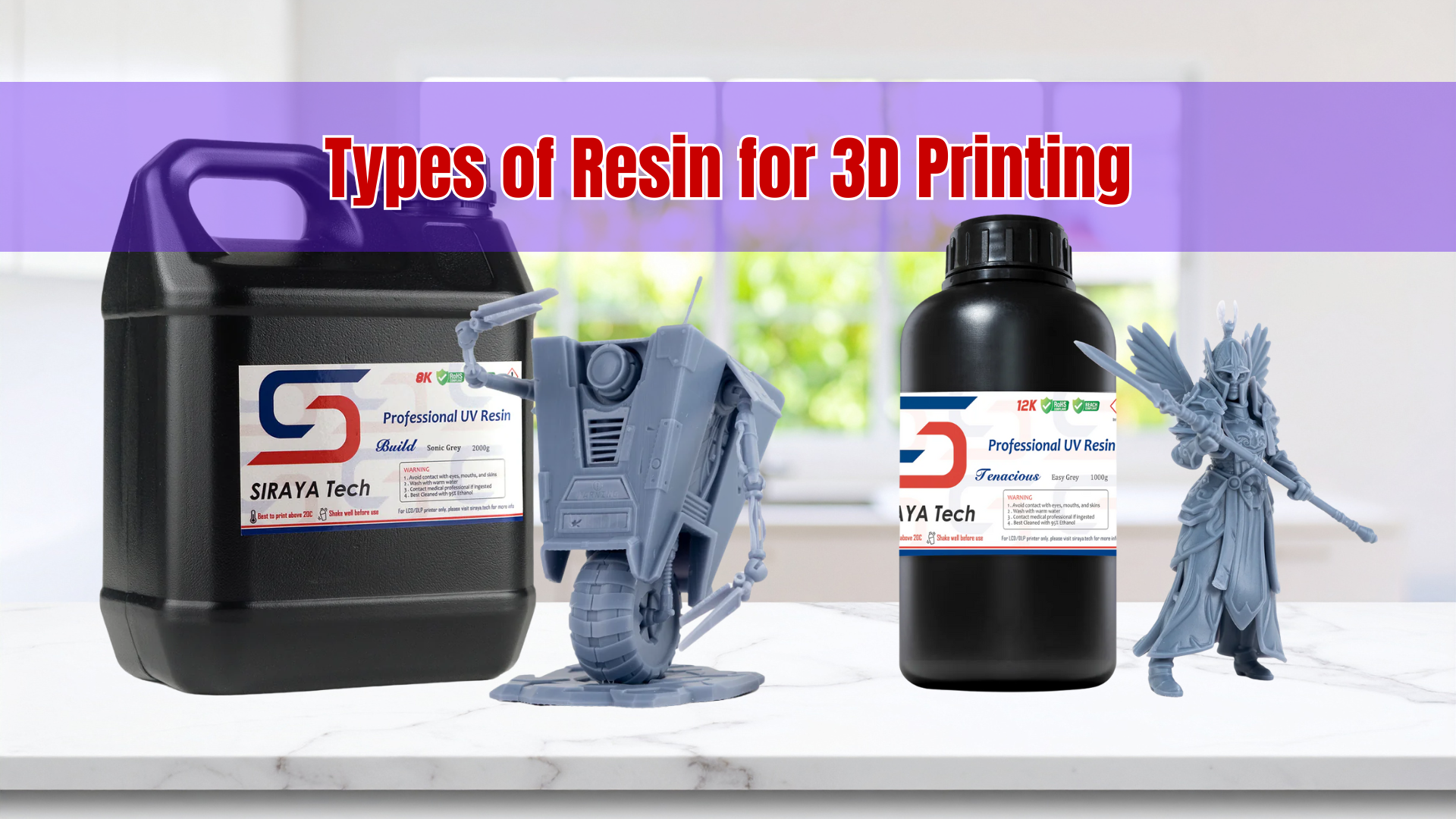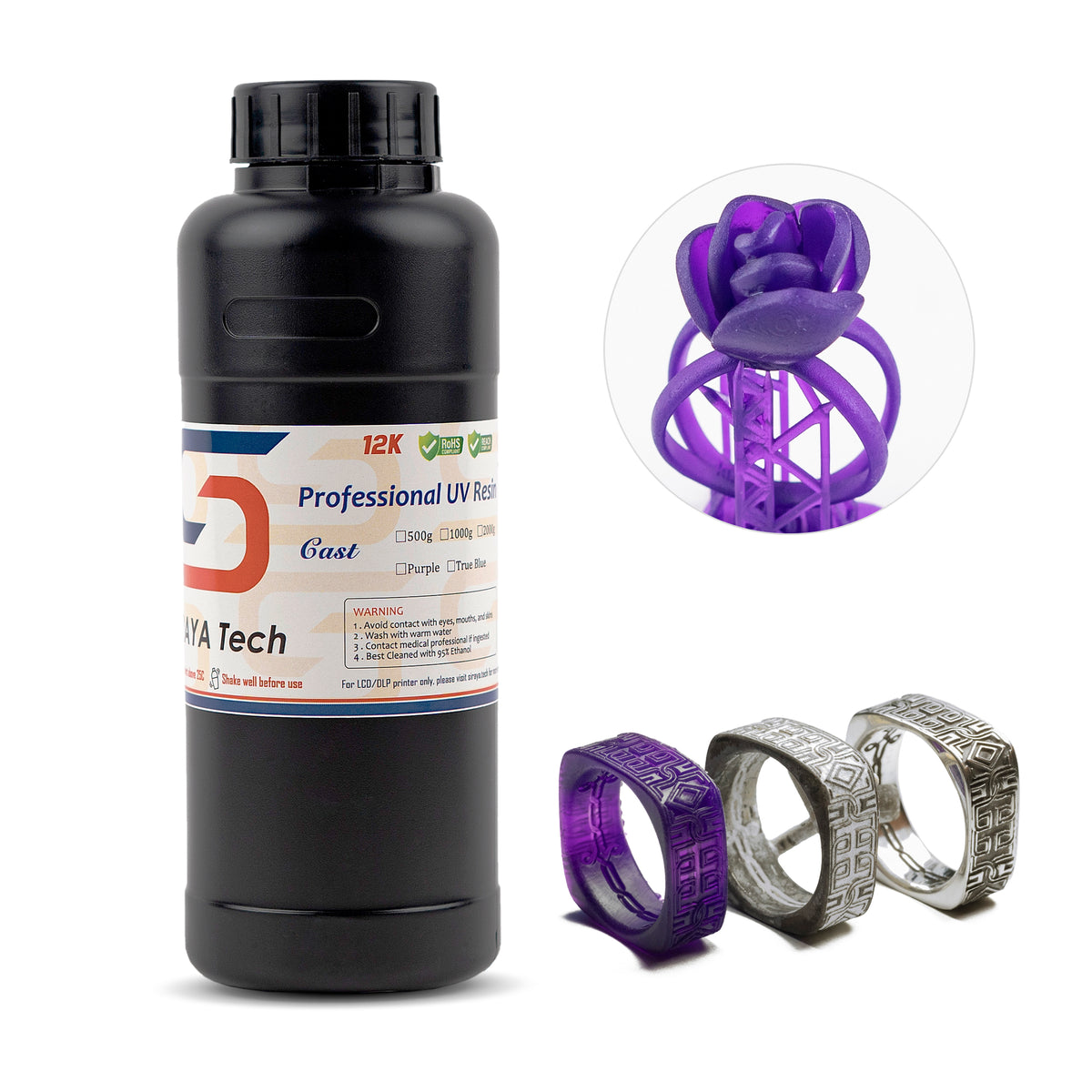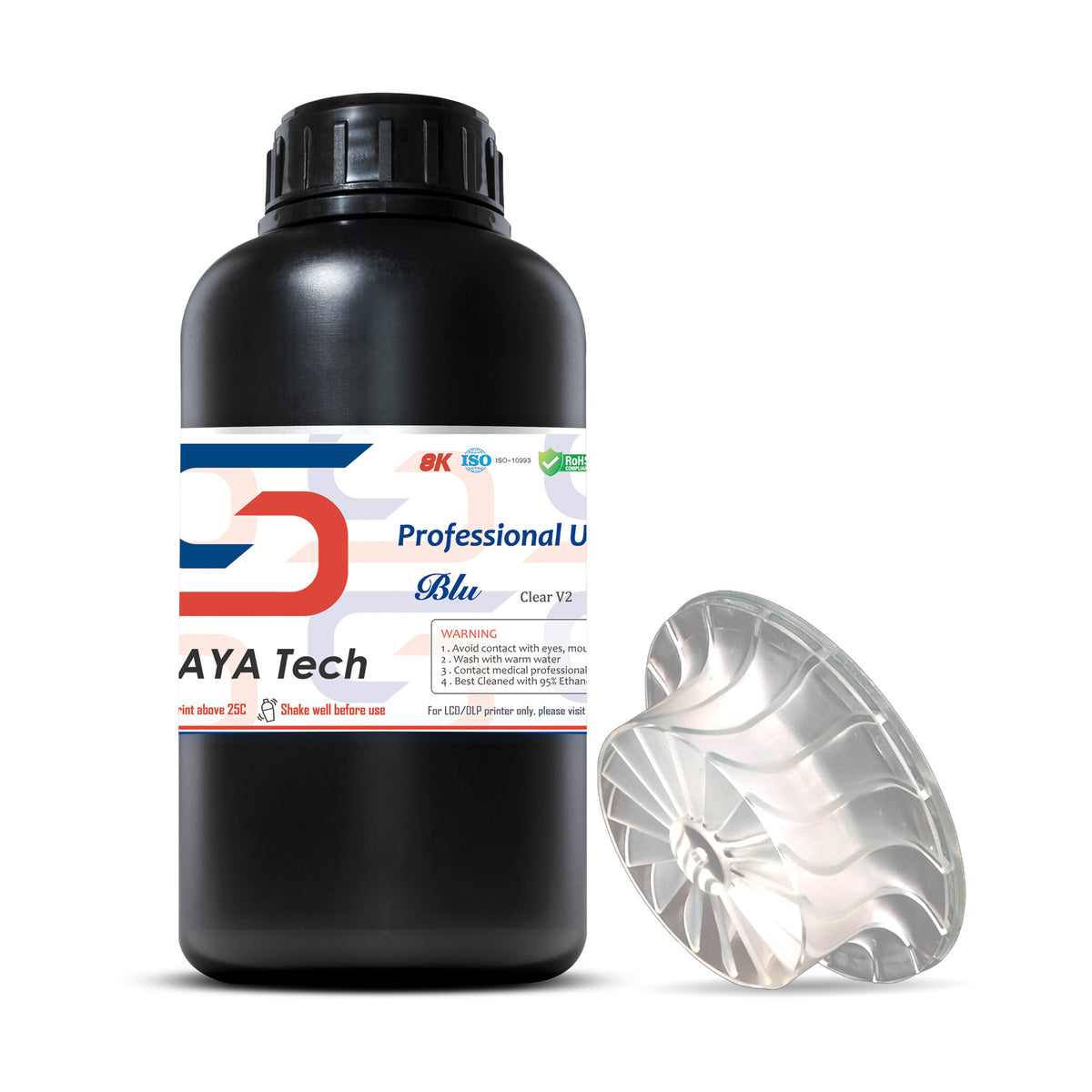3D printing with resin opens up a world of creativity, precision, and professional-quality results.
Whether you’re printing detailed miniatures, jewelry molds, or functional parts, choosing the right resin makes all the difference.
Keep reading to explore the main types of resin for 3D printing, what makes each one unique, and how to choose the best resin for your projects.
What Is Resin in 3D Printing and How Does It Work?
Resin is a liquid material that hardens when exposed to light, usually ultraviolet (UV) light. In resin 3D printing, this process is called photopolymerization, which turns your digital model into a solid object layer by layer.
There are three main resin printing technologies:
- ✅ SLA (Stereolithography): Uses a laser to cure resin point by point.
- ✅ DLP (Digital Light Processing): Uses a projector to cure an entire layer at once.
- ✅ LCD (Liquid Crystal Display): Uses an LCD screen to mask UV light and cure layers.
Each method can use similar resins, but print speed, detail, and finish may vary depending on the printer and project.
Understanding the Main Types of Resin for 3D Printing

There are many types of resin for 3D printing, each designed for specific needs. Some are great for beginners, while others are made for industrial or artistic applications.
Let’s look at the most common types and what they’re best for.
1. Standard Resin: The Everyday Option
Standard resin is the most common and affordable type used in resin 3D printing. It’s perfect for beginners because it’s easy to work with and produces smooth, detailed prints.
Pros: Affordable, smooth surface finish, and great for prototypes or display models.
Cons: Brittle and not ideal for functional parts.
If you’re just starting out, standard resin is a great way to learn the basics of resin printing before moving to more advanced materials.
2. Tough Resin: For Strong and Durable Prints
Tough resin is made to handle stress and impact better than standard resin. It’s similar in strength to ABS plastic and is perfect for making functional parts, tools, or mechanical components.
Pros: High durability and impact resistance.
Cons: Slightly more expensive and can be harder to print.
When comparing materials, tough resin often performs better under pressure than standard resin and can even rival PLA in strength.
3. Flexible and Elastic Resin: For Bendable Parts
Flexible resin feels rubbery and can bend or stretch without breaking. It’s used for parts that need flexibility, such as grips, seals, or wearable items.
Pros: Excellent elasticity and shock absorption.
Cons: Requires careful printing and post-curing to maintain shape.
Flexible resin can be tricky to master, but once you get it right, it’s perfect for creative and functional designs.
4. Transparent and Clear Resin: For Crystal-Clear Prints
Clear resin is ideal for creating see-through models like lenses, light covers, or artistic pieces. It can achieve glass-like transparency with proper post-processing.
Pros: Beautiful clarity and smooth finish.
Cons: Needs polishing or coating to achieve full transparency.
If you often print decorative or visual models, clear resin will make your designs stand out.
5. High-Temperature Resin: For Heat-Resistant Projects
High-temperature resin is built to withstand heat and maintain shape under stress. It’s often used in engineering, automotive, or mold-making applications.
Pros: Excellent thermal stability and precision.
Cons: Requires proper curing and can be more expensive.
📌 If you’re working with thicker or more viscous resins, check out the article “Tips for Printing with High Viscosity Resins” for helpful insights on how to handle them effectively.
6. Castable Resin: For Jewelry and Dental Applications
Castable resin is designed to burn out cleanly during casting, leaving no ash or residue. It’s commonly used for jewelry, dental models, and small metal parts.
Pros: Burns cleanly for metal casting and produces fine details.
Cons: Requires experience to handle correctly.
📌 Read “Navigating Through Your First Castable Resin Project: Tips and Tricks” to learn how to get the best results from your first casting project.
7. Bio-Based and Eco-Friendly Resin: Sustainable Printing Options
Eco-friendly resin is often made from plant-based or renewable materials that reduce environmental impact. While these resins are more sustainable and have lower odor, most are not fully biodegradable yet.
Pros: More sustainable and safer to handle.
Cons: Limited color options and sometimes lower durability.
As technology improves, bio-based resins are becoming more popular and practical for everyday printing.
8. Specialty Resins: For Unique Applications
Specialty resins include ceramic-filled, dental, and high-detail resins. These are tailored for specific industries or artistic needs.
Examples include:
- ✅ Ceramic-filled resin: For textured, heat-resistant prints.
- ✅ Dental resin: For accurate, biocompatible models.
- ✅ High-detail resin: For miniatures and intricate designs.
These resins may cost more but deliver professional-level results for specialized projects.
You May Shop
Comparing SLA, DLP, and LCD Resin Printing Technologies
Each resin printing method affects how your prints look and how fast they’re made. SLA typically offers the smoothest surface and highest detail, DLP is faster because it cures full layers at once, and LCD is the most affordable and improves quickly in quality.
Quick comparison:
- ✅ SLA: Best for fine details and smooth surfaces.
- ✅ DLP: Best for speed and batch printing.
- ✅ LCD: Best for affordability and accessibility.
If you’re unsure which one fits your needs, think about your priorities: detail, speed, or cost.
How to Choose the Best Resin for Your 3D Printing Project

Choosing the right resin depends on what you want your print to do. Start by defining your project’s purpose. Do you need something strong, flexible, or just visually appealing?
Here’s how to decide:
- ✅ For beginners: Standard resin is the easiest to use.
- ✅ For functional parts: Choose tough or high-temp resin.
- ✅ For jewelry or casting: Go with castable resin.
- ✅ For eco-conscious printing: Try bio-based resin.
Always check resin compatibility with your printer and follow manufacturer recommendations.
Key takeaway: Match your resin choice to your project’s purpose — strong for function, flexible for movement, or clear for beauty.
Tips for Working with 3D Printing Resin
Working safely and smartly with resin makes printing more enjoyable and keeps your workspace clean. Always wear gloves, use good ventilation, and handle resin carefully.
Helpful tips:
- ✅ Clean prints with isopropyl alcohol before curing.
- ✅ Cure models under UV light for full strength.
- ✅ Sand and paint cured models for a polished finish.
- ✅ Store resin in a cool, dark place to extend shelf life.
Always check your resin’s Safety Data Sheet (SDS) for handling instructions, and never pour leftover resin down the drain. This ensures compliance with OSHA and EPA safety standards.
Understanding Resin Quality: What Makes a High-Quality Resin?

High-quality resin produces consistent results, cures evenly, and has minimal odor. It should also offer strong layer bonding and smooth surface finishes.
Signs of high-quality resin:
- ✅ Even curing and strong adhesion between layers.
- ✅ Low odor and minimal shrinkage.
- ✅ Stable color and long shelf life.
Low-quality resin can cause print failures or sticky surfaces, so always buy from trusted sources.
Conclusion
Choosing the right types of resin for 3D printing depends on your project’s needs, whether it’s strength, flexibility, or visual appeal.
Experimenting with different resins helps you discover what works best for your style and printer.
For more helpful guides and tips about resin printing and other 3D printing topics, visit Siraya. They also offer high-quality products like 3D printing filaments, resins for 3D printing, and platinum silicone crafting materials to help you create superior projects with confidence.
FAQs About Types of Resin for 3D Printing
What are the three types of resin?
The three main types of resin are standard, tough, and flexible. Standard resin is ideal for general printing and offers a smooth finish. Tough resin provides strength, while flexible resin allows for bendable and shock-absorbing parts.
Is epoxy resin stronger than PLA?
Epoxy resin can be stronger and more impact-resistant than PLA after full curing. However, PLA is easier to print and more flexible for general use. The best choice depends on whether you prioritize durability or ease of printing.
Which resin is best for beginners?
Standard resin is the best choice for beginners because it’s affordable and easy to use. It provides reliable results and helps new users learn the basics of resin printing. Once experienced, users can experiment with tougher or specialty resins.
What is high-quality resin?
High-quality resin cures evenly, has low odor, and produces consistent results. It should maintain stability over time without discoloration or tackiness. Always choose resins from reputable manufacturers for reliable performance.
What is illegal to print on a 3D printer?
It’s illegal to print weapons, counterfeit goods, or copyrighted materials. These restrictions protect public safety and intellectual property rights. Always use 3D printing responsibly for educational, artistic, or personal projects



